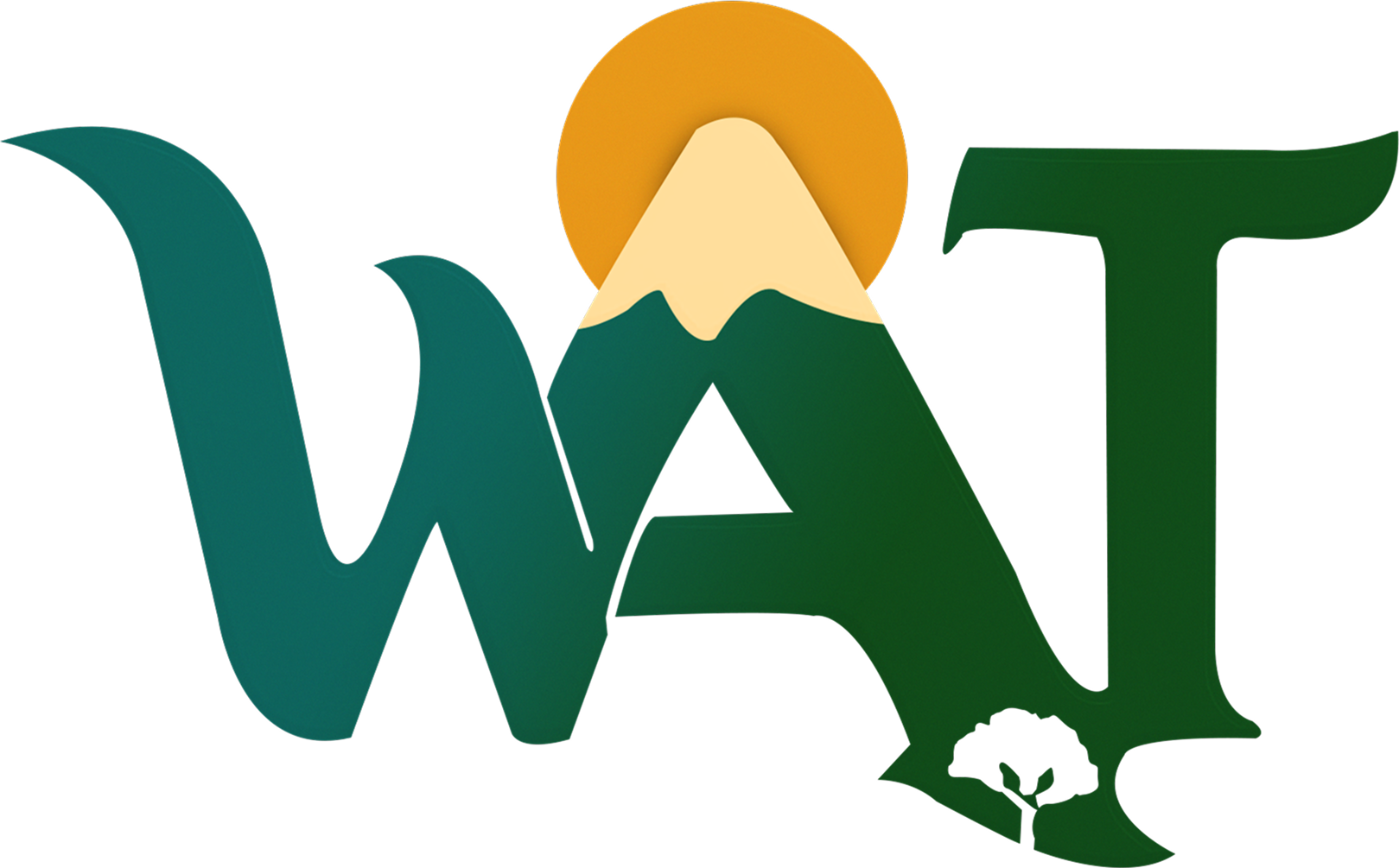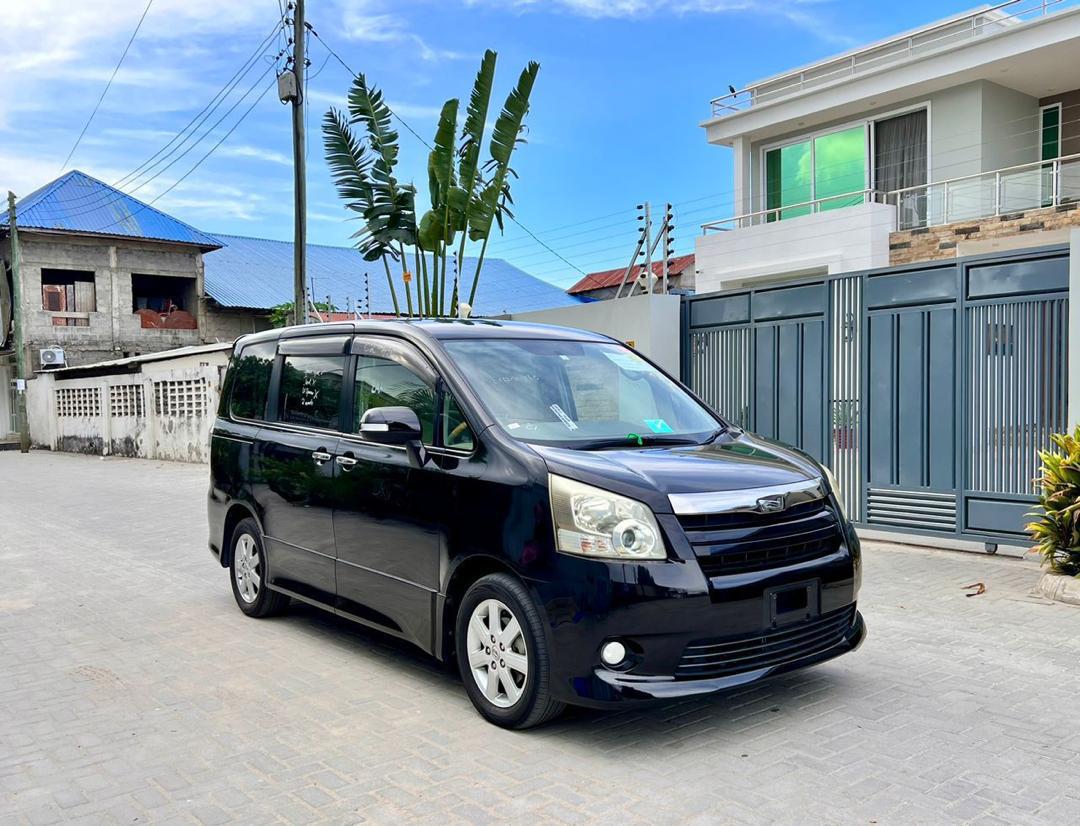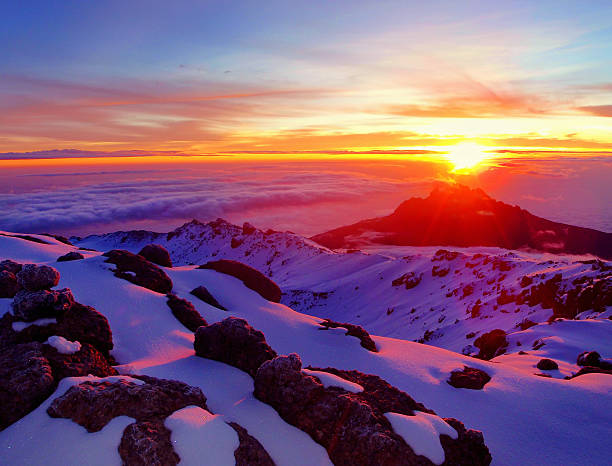Essential Guide to Safari in Tanzania Cost: Plan Your Adventure Wisely

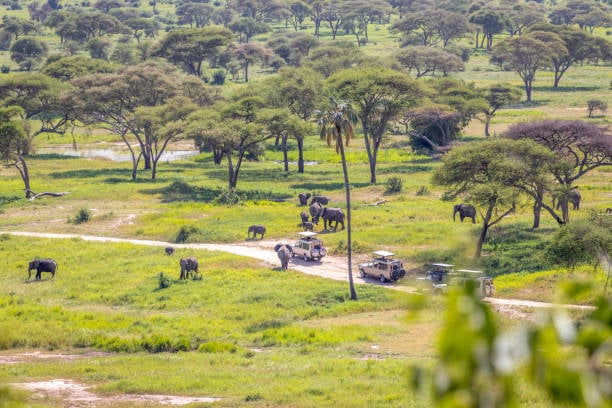
Introduction: Why Understanding Safari in Tanzania Cost Matters
Planning an adventure to Tanzania is an exciting journey in itself. The key to turning this dream into reality is understanding the safari in tanzania cost. This ensures you can budget effectively and choose an itinerary that matches your hopes and expectations.
From the endless plains of the Serengeti to the unique ecosystem of the Ngorongoro Crater, Tanzania offers an unparalleled wildlife experience. However, prices can vary dramatically based on where you go, when you travel, and the level of comfort you desire.
This guide breaks down every component of Tanzania safari prices, helping you plan a wise and unforgettable trip for your family.
At a Glance: Tanzania Safari Cost Ranges
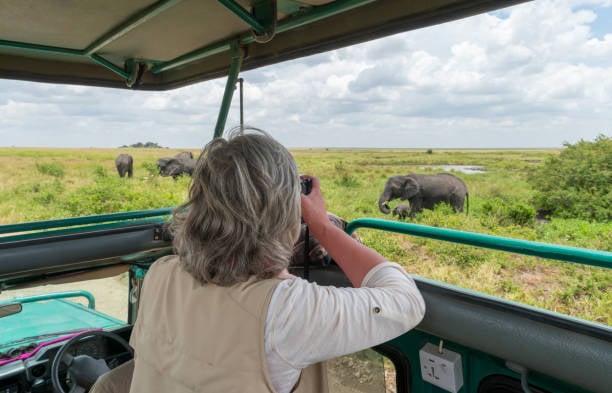
A safari in Tanzania can be tailored to various budgets. Generally, you can expect costs to fall within a predictable range per person per day. These figures typically include accommodation, park fees, a private vehicle with a guide, and meals.
For a general idea, typical modern price ranges for Tanzania safaris are $250–$1,000+ per person per day. The final figure depends heavily on whether you choose a budget camping trip or a high-end luxury safari experience.
Packages for several days often start in the low thousands of dollars. Keep in mind these are all-inclusive estimates, and we will explore the details shortly. (Prices accurate as of August 2025).
What You’ll Learn in This Guide
This guide provides a transparent look at what drives your safari costs. We will cover everything you need to know to plan your adventure.
You will find:
Detailed breakdowns of major cost factors.
Sample costs for budget, mid-range, and luxury safaris.
Park-by-park fee guidance for popular destinations.
Example itineraries and ways to save money.
Key Facts to Know Before You Plan
Before diving into the numbers, it helps to know some core facts about Tanzania's incredible parks. These protected areas are the heart of your safari experience and a primary driver of costs through conservation fees.
The Serengeti hosts the Great Migration, where millions of wildebeest and zebras traverse the plains. It is also a birdwatcher's paradise, with over 500 bird species recorded.
Further south, Nyerere National Park (formerly Selous) is one of the largest protected areas in Africa, covering approximately 50,000 km².
The Ngorongoro Conservation Area is a UNESCO World Heritage Site, famous for its dense wildlife population within a volcanic caldera.
Main Cost Factors That Set Safari Cost
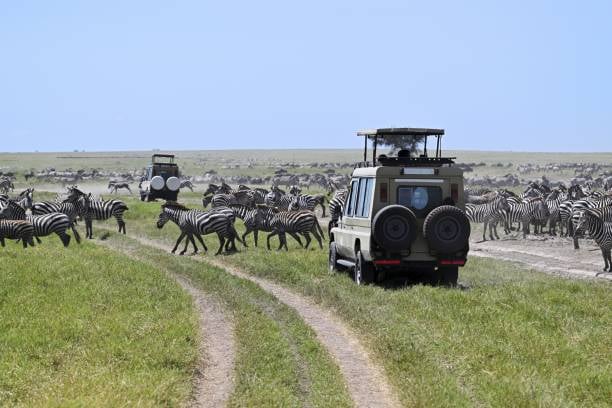
Several key elements influence the final tanzania safari cost. Understanding these components allows you to see where your money goes and where you might be able to make adjustments to fit your budget.
The primary drivers are your choice of accommodation, the park and conservation fees for the areas you visit, and your mode of transport.
The length of your trip and the season in which you travel also play significant roles in the overall price.
Accommodation Costs: Tented Camps to Luxury Lodges
Accommodation is often the largest single expense on a Tanzanian safari. The options range from basic campsites to incredibly luxurious lodges with private plunge pools.
Budget options include public campsites where you bring your own gear or have it supplied by your tour operator. These offer a rustic and immersive experience.
Mid-range choices often involve "tented camps," which are permanent canvas structures with comfortable beds and en-suite bathrooms. They offer a great balance of comfort and adventure.
At the high end, luxury lodges provide hotel-like amenities, gourmet food, and stunning locations, representing the peak of safari comfort.
Park Fees and Conservation Fees (how they’re charged)
Every visitor to a national park or conservation area in Tanzania must pay daily fees. These funds are crucial for wildlife protection, anti-poaching efforts, and maintaining park infrastructure.
Fees are typically charged per person per 24-hour period. They vary significantly from park to park, with the most famous destinations having the highest rates.
For example, the Ngorongoro Conservation Area, a UNESCO World Heritage Site, has published visitor tariffs. As of recent NCAA tariff sheets, the entry fee for a non-East African adult is approximately $70.80 USD, plus an additional fee for the vehicle's descent into the crater.
Always check the latest official tariff sheets from TANAPA (Tanzania National Parks Authority) and NCAA (Ngorongoro Conservation Area Authority) before budgeting, as these can change.
Transport Costs: Internal Flights, Safari Vehicle, Scenic Flight

Your primary mode of transport on safari will be a 4x4 Land Cruiser. The cost of the vehicle, fuel, and your professional driver-guide is a core part of your package price.
For itineraries covering vast distances, such as combining the northern and southern circuits, internal flights are necessary. These flights add to the cost but save significant travel time.
A scenic flight over areas like the Serengeti offers a breathtaking perspective but is considered a premium add-on.
Trip Length & Per Person vs Per Vehicle Pricing
The longer your safari, the higher the total cost will be. However, the cost per person per day might decrease slightly on longer trips, as fixed costs like vehicle hire are spread over more days.
Most safari packages are priced on a per person basis, especially when accommodation and park fees are included. This is often quoted as a price "per person sharing," meaning two people sharing a room or tent.
Solo travelers may face a "single supplement" fee, as they are not sharing the cost of a room. Understanding the person per day rate is key to comparing quotes.
Activities That Increase Safari Cost (Hot Air Balloon Safaris, Walking Safari, Boat Safaris)
While standard game drives are included in your package, several special activities can enhance your experience at an additional cost. These options offer a different perspective on the wilderness.
A hot air balloon safari over the Serengeti is a truly magical experience, typically costing between $500 and $600 per person. This unforgettable adventure includes a champagne breakfast upon landing.
Guided walking safaris allow you to connect with the bush on a more intimate level, while boat safaris, particularly in Nyerere National Park, offer unique sightings of hippos, crocodiles, and birds.
These activities are priced separately and can significantly increase your daily spending if you choose to include several of them.
Peak Season vs Low Season Pricing
When you travel has a major impact on tanzania safari prices. The tourism industry in Tanzania is highly seasonal, driven by weather patterns and major wildlife events like the Great Migration.
Peak season generally runs from June to October (the dry season) and during the December holiday period. During these months, demand is high, and lodges charge their highest rates.
The "green" or low season (approximately April-May and November) sees fewer visitors and lower prices. This can be a great time to find deals, though you should be prepared for some rain.
Sample Costs: Budget → Luxury
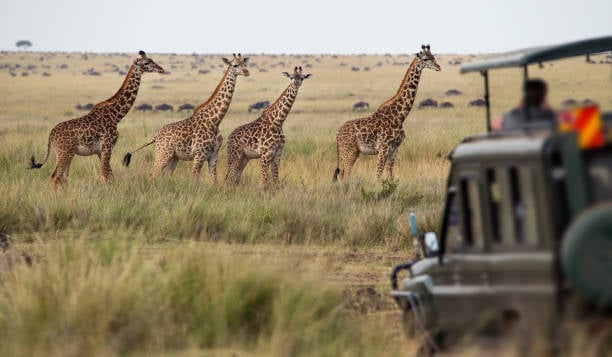
To make planning easier, safari costs are often categorized into three tiers: budget, mid-range, and luxury. Each offers a different experience and price point.
Budget safari (camping safaris, group departures)
A budget safari is the most affordable way to experience Tanzania's wildlife. This typically involves staying in public campsites in dome tents and may be part of a group departure to share costs.
You can expect a per person per day cost in the range of $250–$350. This is an excellent option for adventurous travelers and those on a tight budget.
While the amenities are basic, the wildlife viewing is just as spectacular. You will be guided by a professional and have a dedicated cook to prepare meals.
Recent price ranges from various operators confirm these estimates for a classic camping safari experience.
What’s included in a budget safari package
A typical budget safari package includes a 4x4 vehicle with a pop-up roof, a professional driver-guide, a cook, all camping equipment, three meals per day, and all park entry fees.
You get the core safari experience without the frills of more expensive options.
Mid-range / mid range safari — realistic costs
The mid-range safari is the most popular choice for many visitors, including families and first-time safari-goers. It offers a fantastic balance of comfort, value, and immersion.
Expect to pay between $350 and $650 per person per day for a mid range package. This provides access to comfortable and well-located tented camps and small lodges.
This price point allows for a more relaxed experience with better amenities than a budget safari, often including en-suite bathrooms and more spacious accommodations.
A 7-day mid-range safari for two people could cost between $2,450 and $4,550 per person, offering a comprehensive northern circuit itinerary.
Typical accommodation costs for mid range
Accommodations in a mid-range package usually consist of permanent tented camps. These are not basic tents but large, canvas-sided rooms built on a permanent base.
They feature proper beds, private bathrooms with flush toilets and hot showers, and often a small veranda to enjoy the views.
Luxury Safari and Costs (private safaris & luxury lodges)
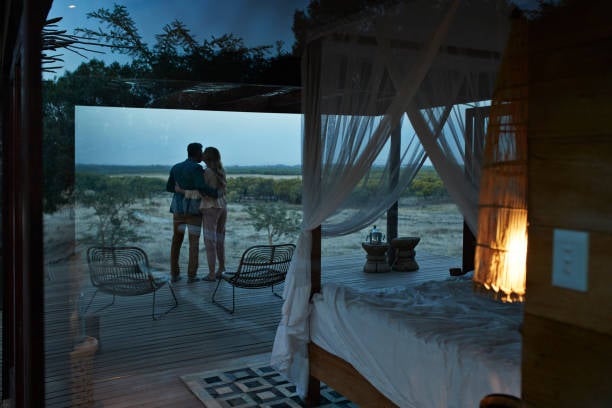
For those seeking the ultimate in comfort and exclusivity, a luxury safari in Tanzania delivers an unparalleled experience. This tier involves staying in premier luxury lodges and exclusive camps.
A luxury safari typically starts at $600 per person per day and can easily exceed $1,500 for the most opulent properties. These packages often include private safaris for maximum flexibility.
This level of service includes gourmet dining, top-shelf drinks, and often additional perks like laundry service and private plunge pools. The luxurious accommodation is a destination in itself.
The focus is on impeccable service, stunning locations, and an intimate connection with the wild, far from the crowds.
What extra value you get on a luxury safari
Beyond the lavish accommodation, a luxury safari often includes highly experienced guides, superior quality vehicles, and exclusive access to private concessions.
You may also have extras like complimentary drinks, laundry services, and sometimes even a private butler.
Park-by-Park Cost Guidance & Why Visit
The parks you choose for your itinerary directly impact your tanzania safari cost, as each has different entry fees and accommodation options.
Serengeti National Park: Why it Matters and Cost Notes
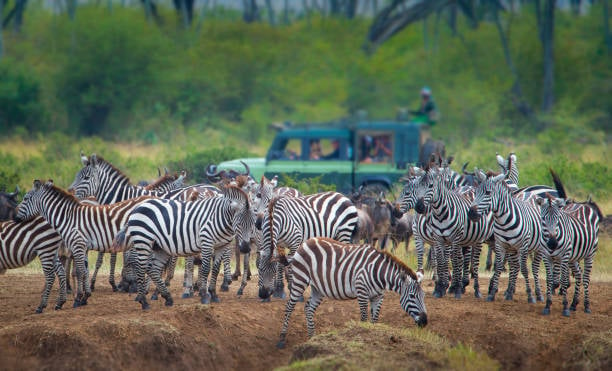
The Serengeti National Park is Tanzania's most famous park and a cornerstone of any northern circuit itinerary.
It is renowned for hosting the Great Migration, an awe-inspiring spectacle of millions of wildebeest and zebra. The park's vast ecosystem also supports an incredible density of predators and over 500 bird species.
Park fees for the Serengeti are among the highest in the country, reflecting its world-class status. As of 2025, the daily conservation fee is around $70-$80 per adult, but this should be verified on the official TANAPA website.
These fees, combined with the often remote and exclusive nature of the camps within the park, contribute significantly to the overall tanzania safari cost.
Planning a trip to the Serengeti is an investment in a once-in-a-lifetime wildlife experience.
Best time to visit Serengeti national park for sightings
The best time to visit depends on what you want to see. To witness the dramatic river crossings of the Great Migration, aim for July to October in the northern Serengeti.
For calving season, when thousands of wildebeest are born, plan your trip for January to March in the southern Ndutu region.
Extra costs: balloon safaris, fly-in transfers
A hot air balloon safari is a popular and highly recommended activity in the Serengeti, offering a unique aerial view of the plains. This will add a significant amount to your budget.
For those staying in remote camps or on a tight schedule, fly-in transfers from Arusha are a common choice, adding the cost of a domestic flight.
Ngorongoro Conservation Area: Fees & What’s Included
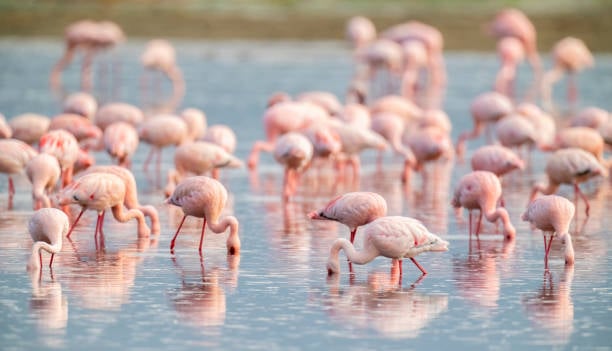
The Ngorongoro Conservation Area is another jewel of Tanzania, home to the famous Ngorongoro Crater. This massive, intact volcanic caldera is a UNESCO World Heritage Site, offering some of the most reliable Big Five sightings in Africa.
The fees here are structured differently from other parks. As of late 2025 NCAA tariffs, there is a conservation fee per person per day (approx. $70.80 for non-EA adults) plus a separate, steep vehicle descent fee to enter the crater floor (approx. $295 per vehicle).
This makes a day trip into the crater a significant expense. The fees are essential for preserving this unique environment.
Always consult the Ngorongoro Conservation Area Authority (NCAA) for the most up-to-date tariff information before your trip.
Ngorongoro Crater Day Trip vs Overnight: Cost Differences
Most visitors experience the crater as a day trip while staying at a lodge on the crater rim or in the nearby town of Karatu. This is the most cost-effective way to see it.
Staying at a lodge on the crater rim itself is a luxury option that offers stunning views but comes at a premium price.
Tarangire National Park: Cost and Wildlife Reasons to Visit

Tarangire National Park is famous for its massive elephant herds and iconic baobab trees. It's a fantastic park, especially in the dry season (June-October) when wildlife congregates along the Tarangire River.
Its park fees are more moderate than the Serengeti or Ngorongoro, making it a great value addition to the northern safari circuit.
Lake Manyara National Park: Small Park, Big Value
Lake Manyara National Park is a compact and diverse park, known for its tree-climbing lions, large flamingo flocks, and lush groundwater forest.
Due to its smaller size, it can be explored in a half-day or full-day trip, offering a high-value experience with relatively lower costs compared to a full day in the larger parks.
Ruaha National Park & Southern Circuit Pricing
Ruaha National Park is the largest national park in Tanzania and the anchor of the southern safari circuit. It offers a wild, remote experience with a fraction of the visitors of the northern parks.
Because it is less accessible, safaris here often involve fly-in packages, which can increase the base cost. However, the camps offer an exclusive and authentic bush experience.
Nyerere National Park (Selous) and Rufiji River Boat Safaris
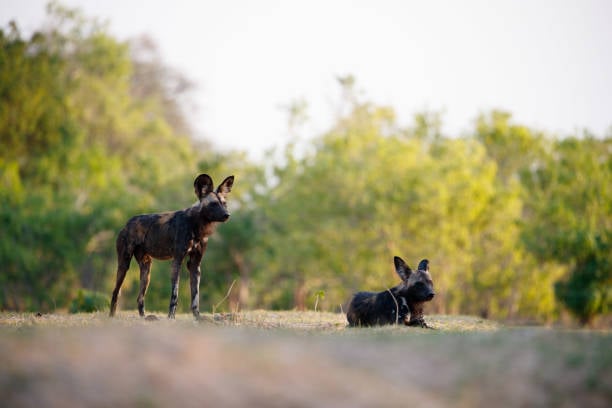
Nyerere National Park, formerly part of the Selous Game Reserve, is a vast wilderness and one of the largest protected areas in Africa at approximately 50,000 km². This UNESCO World Heritage site is a stronghold for wild dogs.
A key attraction here is the ability to do activities not permitted in many northern parks. Nyerere (Selous) offers boat safaris on the Rufiji River and walking safaris.
These unique activities provide a different dimension to your african safari, allowing you to see hippos, crocodiles, and abundant birdlife up close from the water.
Katavi National Park & Off-the-beaten-path Costs
For the truly intrepid traveler, Katavi National Park in western Tanzania offers an exceptionally remote and wild safari. This park is known for its huge buffalo herds and high concentration of hippos in the Katuma River during the dry season.
Getting here requires expensive charter flights, making it one of the most costly safari destinations in the country.
Circuits, Itineraries & Sample Budgets
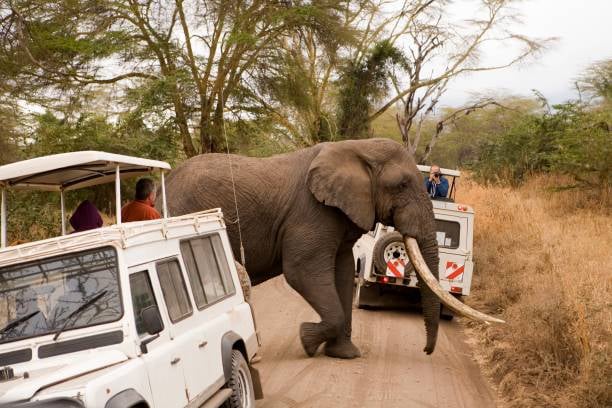
Tanzania's safari destinations are generally grouped into circuits, which helps in planning a logical and cost-effective itinerary.
Northern Safari Circuit: Typical Itinerary and Cost
The northern safari circuit is the most famous and popular route in Tanzania. It is easily accessible from Kilimanjaro International Airport and includes the country's most iconic parks.
A classic itinerary often follows this path: Arusha → Tarangire National Park → Lake Manyara National Park → Serengeti National Park → Ngorongoro Conservation Area.
This route provides an incredible diversity of landscapes and wildlife over 7 to 10 days. The cost can be tailored from budget camping to extreme luxury.
A 7-day mid-range safari on the northern safari circuit could cost around $3,000–$4,500 per person.
Southern Safari Circuit & Fly-in Options
The southern circuit offers a wilder, more off-the-beaten-path experience. The main parks here are Nyerere and Ruaha.
Because of the vast distances, itineraries in the southern circuit often rely on fly-in options, connecting the parks via small bush planes. This adds to the cost but maximizes your time on the ground.
Activities like fly camping (sleeping out in a simple tent in a remote location) offer a truly immersive adventure.
Combining Safari With Zanzibar or Beach Stays (Visit Tanzania + island add-ons)
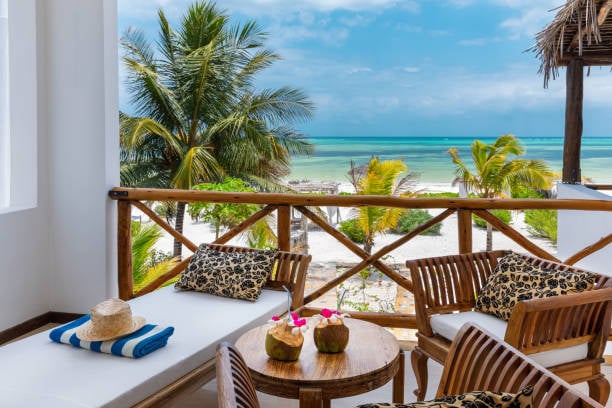
After the dust and early mornings of a safari, many visitors choose to relax on the beautiful beaches of Zanzibar. It is a perfect way to conclude a trip when you visit tanzania.
Combining a safari with an island add-on is very common and easy to arrange. Tour operators can package this for you seamlessly.
A 3-night all-inclusive stay at a mid-range beach resort in Zanzibar might add approximately $600–$900 per person to your total trip cost, including flights from the mainland.
This combination of bush and beach showcases the incredible diversity Tanzania has to offer.
Sample 7-day, 10-day, 14-day Cost Tables (per person)
The following table provides estimated costs for a safari in Tanzania. These are per person figures and can vary based on the specific operator and season.
| Trip Length | Budget (Camping) | Mid-Range (Tented Camp) | Luxury (Lodge) |
|---|---|---|---|
| 7 Days | $1,750 - $2,450 | $2,450 - $4,550 | $4,200+ |
| 10 Days | $2,500 - $3,500 | $3,500 - $6,500 | $6,000+ |
| 14 Days | $3,500 - $4,900 | $4,900 - $9,100 | $8,400 |
How to Trim Costs
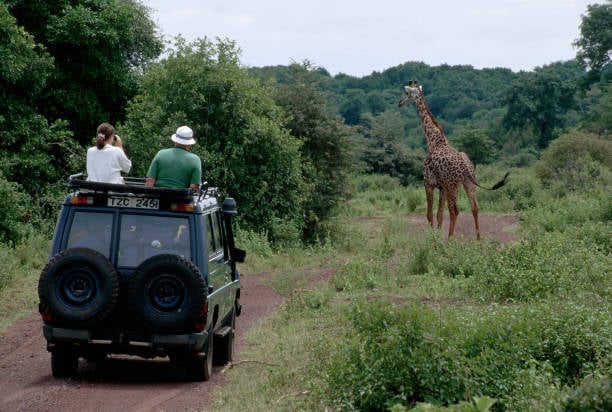
With smart planning, it is possible to lower your tanzania safari cost without compromising on the quality of your wildlife viewing experience.
Budget Hacks for Safari Cost Savings
A few key strategies can make a significant difference. Traveling during the shoulder or low season will unlock lower accommodation rates and potentially better deals.
Joining a small group departure is another effective way to reduce the person per day cost, as you share the price of the vehicle and guide.
Travel Low Season, Group Departures, Shared Vehicles
The low season, specifically April, May, and November, offers the lowest prices of the year. While there may be rain, the parks are lush and green with fewer crowds.
Opting for a scheduled group tour rather than a private trip is one of the most effective ways to save.
This means you will share your safari vehicle with a few other travelers, splitting the fixed costs and making the trip more affordable for everyone involved.
Choose Mid-range Tented Camps or Camping Safaris
Your choice of accommodation has the biggest impact on the final price. Opting for camping safaris is the ultimate budget-friendly choice.
Alternatively, choosing comfortable but not extravagant mid range tented camps provides a fantastic experience at a fraction of the cost of luxury lodges.
These camps still place you right in the heart of the action, often with wildlife wandering right through the property.
Practical Booking & Safety Costs
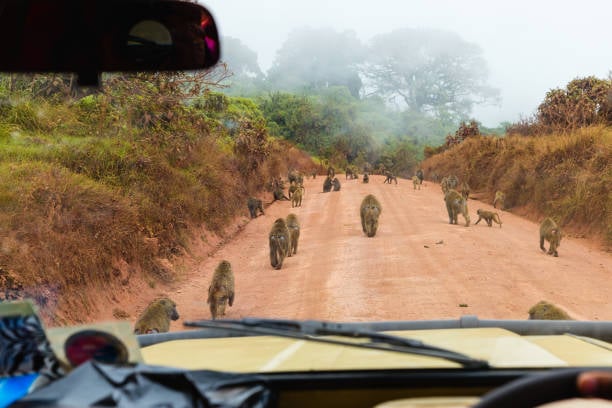
Beyond the main package price, there are several other practical costs to factor into your budget.
Park Permits, Conservation Fees & Camping Fees: What to Expect
As mentioned, park fees and conservation fees are a mandatory and significant part of your safari cost. Your tour operator will typically handle all permits and include these in your quote.
If you are on a camping safari, there will also be nightly camping fees for using the designated public campsites within the parks.
Insurance, Tipping, Vaccinations & Arrival Costs
Comprehensive travel insurance is essential for any trip to Africa. Ensure your policy covers medical emergencies, evacuation, and trip cancellation.
Tipping is customary and expected for your guide and lodge staff. Budget around $10–$15 per person per day for your guide and a similar amount for the general staff.
Also, remember to budget for vaccinations, visa fees upon arrival, and any personal spending money.
Airport Logistics: Kilimanjaro International Airport & Dar es Salaam
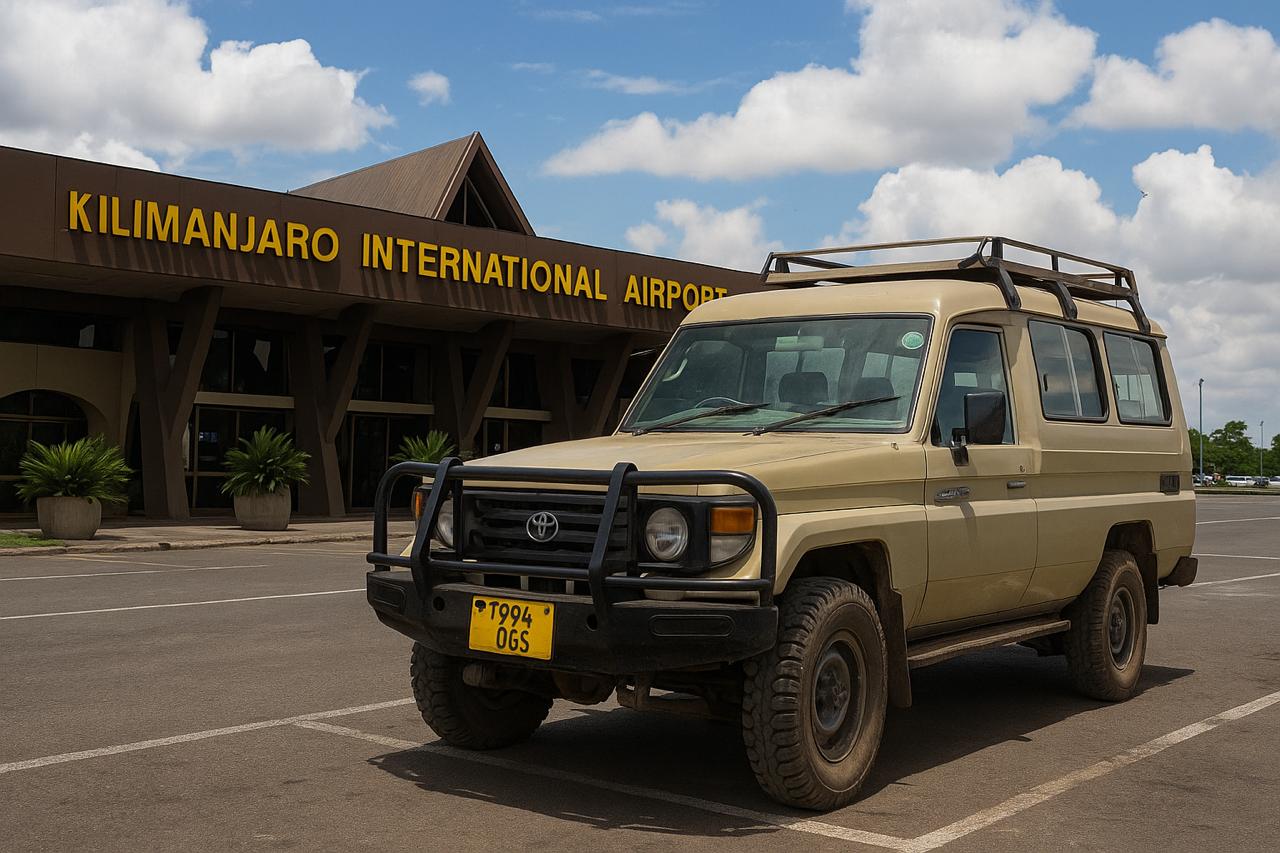
For the northern safari circuit, you will fly into Kilimanjaro International Airport (JRO), located near Arusha. For the southern circuit or Zanzibar, you will likely fly into Dar es Salaam (DAR).
Your tour operator will arrange for your airport transfers, but the cost of your international flight is separate from your safari package price.
Choosing an Operator & Tour Structure
Selecting the right safari company is crucial for a successful and safe trip.
How to Choose a Tanzania Safari Tours Company
When choosing from the many Tanzania safari tours companies, look for a reputable, locally-based tour operator. Local operators have deep knowledge of the parks and contribute to the local economy.
Check for reviews on trusted platforms like TripAdvisor. A good safari company will be responsive, transparent about pricing, and happy to customize an itinerary for you.
Ensure your chosen tour operator is licensed and has a proven track record of safety and customer satisfaction.
Private Safaris vs Group Departures
Private safaris offer the ultimate flexibility. You have the vehicle to yourself, allowing you to set the pace and focus on your interests, whether it's photography or birdwatching.
Group departures are more affordable as you share the costs. They are a great way to meet other travelers but offer less flexibility in the daily schedule.
What to Ask a Tour Operator (insurance, vehicle, guide ratios)
Before booking, ask your tour operator about their level of liability insurance. Also, inquire about the age and type of their safari vehicles and how they are maintained.
Confirm what is included and excluded in the price, and ask about the experience level of their guides.
Experience & Activities That Affect Cost
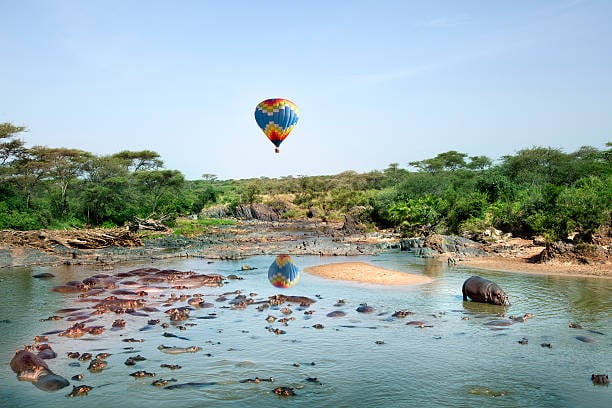
Beyond game drives, special activities can elevate your safari but also add to the overall Tanzania safari cost.
Safari Activities That Add Cost: Hot Air Balloon Safaris, Walking Safari, Night Drives
As mentioned, hot air balloon safaris are a premium add-on, offering incredible views at a high price point. A guided walking safari is a more moderately priced activity that provides a unique ground-level perspective.
Night game drives, where available, offer a chance to see nocturnal animals and are another extra cost to consider.
Family Friendly Options and Extra Child Costs
Tanzania is a wonderful destination for a family safari. Many lodges offer family tents or interconnected rooms.
Tour operators often have discounted rates for children under a certain age (usually 12 or 16), which are applied on a person per person basis. Park fees are also lower for children.
Luxury Add-ons: Private Guide, Helicopter Transfer, Scenic Flight
For the ultimate luxury experience, you can arrange for a private specialist guide to accompany you throughout your trip.
Helicopter transfers between parks or a scenic flight over landmarks like Ol Doinyo Lengai volcano can also be arranged for an exclusive and breathtaking experience.
These services represent the highest end of the safari market and come with a corresponding price tag.
Conservation & Responsible Spending
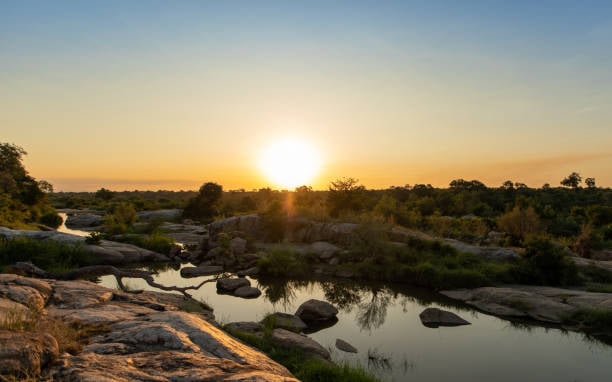
Your safari spending plays a direct role in the conservation of Tanzania's incredible natural heritage.
Why Park Fees & Conservation Fees Matter
The substantial park fees and conservation fees you pay are the primary source of funding for protecting wildlife and their habitats.
This money pays for ranger salaries, anti-poaching patrols, and community development projects that help people living near the parks benefit from tourism.
Supporting Local Communities Through Your Spend
Choosing a local tour operator ensures that more of your money stays within the Tanzanian economy. You can also support communities by purchasing authentic crafts from designated local markets.
Some lodges and camps have direct partnerships with local villages, contributing to schools and healthcare initiatives.
Ethical Photo-behaviour & Limiting Impact
Always follow your guide's instructions regarding wildlife viewing. Never pressure your driver to get too close to animals, and keep your voice down to avoid disturbing them.
Final Planning Checklist & Timelines
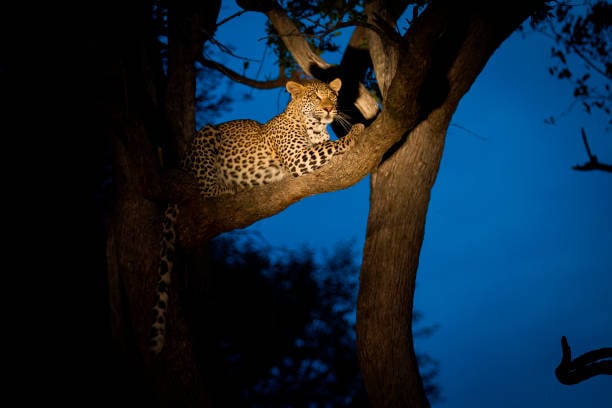
Proper planning and timing are key to a smooth and enjoyable safari experience.
When to Book, Deposits and Selected Dates
For travel during the peak season (June-October), it is crucial to book your safari 6 to 12 months in advance. Popular lodges and camps fill up quickly for these selected dates.
You will typically be required to pay a deposit (around 20-30%) to secure your booking, with the final balance due 60-90 days before your arrival.
Booking early ensures you get your preferred accommodations and itinerary.
Visa, Currency and Documents to Prepare
Check the visa requirements for your nationality well in advance. Many nationalities can obtain a visa on arrival, but an e-visa is often recommended to save time.
The local currency is the Tanzanian Shilling (TZS), but US Dollars are widely accepted for tourism purposes. Ensure you have copies of your passport, flight tickets, and travel insurance policy.
Final Day & Return Flight Considerations
Most safari itineraries end in Arusha in the late afternoon on the final day. Plan your return flight accordingly.
Many travelers book a day room in Arusha to relax and shower before transferring to Kilimanjaro International Airport (JRO) for an evening return flight.
Be sure to confirm your transfer logistics with your tour operator.
FAQ & Pricing Example
Here are answers to some of the most common questions about the cost of a safari in Tanzania.
FAQ — common cost questions answered
How much does a Tanzania safari cost per person per day
On average, a mid-range safari costs between $350 and $650 per person per day. Budget camping can be as low as $250, while luxury safaris can exceed $1,000 per person per day.
Is a hot air balloon worth the cost?
Most people who do it say it is a highlight of their trip. The serene, breathtaking views of the Serengeti at sunrise are unforgettable. It is a big expense, but the experience is truly unique.
Can I do a budget safari and still see wildlife?
Absolutely. The wildlife is the same regardless of your accommodation. A budget camping safari gets you just as close to the action, with excellent guides ensuring you have fantastic sightings.
Which parks have the highest park fees?
The Serengeti National Park and the Ngorongoro Conservation Area have the highest daily park and conservation fees, reflecting their premier status and the high costs of maintaining these ecosystems.
Can I do a budget safari and still see the Great Migration?
Yes. Your tour operator can design a budget camping itinerary that follows the Great Migration. You will stay in public campsites in the relevant area of the Serengeti to witness the spectacle.
How much should I tip my guide per person?
A common guideline is to tip your safari guide $10–$15 per person in your group per day. This recognizes their hard work, expertise, and long hours dedicated to making your trip special.
Pricing example: sample 10-night package — cost breakdown per person
Here is a sample breakdown for a 10-night mid-range safari, based on two people traveling. This illustrates how the final person per person cost is calculated.
Accommodation (10 nights): $2,200
Park & Conservation Fees: $850
Vehicle, Guide & Fuel: $1,200
Crater Descent Fee: $150 (split)
Meals & Water: $400
Internal Flight (Serengeti to Arusha): $250
Total Per Person: ~$5,050
This example provides a realistic estimate for a comprehensive and comfortable tanzania safari cost.
Resources & recommended operators
Using official sources and trusted operators is the best way to plan your trip.
Official Resources: Park Authorities & Tariffs
For the most accurate and current information on park fees, always refer to the official websites. The primary authorities are TANAPA (Tanzania National Parks) and the NCAA (Ngorongoro Conservation Area Authority).
You can also find valuable information on UNESCO World Heritage Centre pages for sites like Ngorongoro and Selous.
Recommended Booking Approach & Local Operators Directory
The best approach is to contact several trusted local safari operators to compare quotes and find one that aligns with your preferences and budget. Platforms like SafariBookings or operators with solid TripAdvisor reviews can be helpful starting points.
That said, at WeAreTanzania (WAT), we take pride in offering handpicked safari experiences tailored to your needs whether it’s a private journey, group tour, or custom itinerary. Feel free to explore our tours or contact us directly for advice or booking support.
Next Steps: Get Quotes and Plan Your Itinerary
Now that you have a clear understanding of the costs, the next step is to reach out to a few recommended safari operators. Provide them with your interests, budget, and travel dates to receive a custom itinerary and quote.
Appendix: glossary & units
Understanding a few key terms will help you navigate safari quotes and itineraries.
Full Board Basis: This means that your accommodation, breakfast, lunch, and dinner are all included in the price.
Tented Camp: A permanent accommodation structure with canvas walls, a solid floor, and en-suite private bathroom facilities.
Fly-in: An itinerary that uses small aircraft to travel between parks or remote lodges, saving long driving times.
Per Person: Prices are almost always quoted on a per person basis. "Per person sharing" is the rate for one person assuming they are sharing a room with another.
